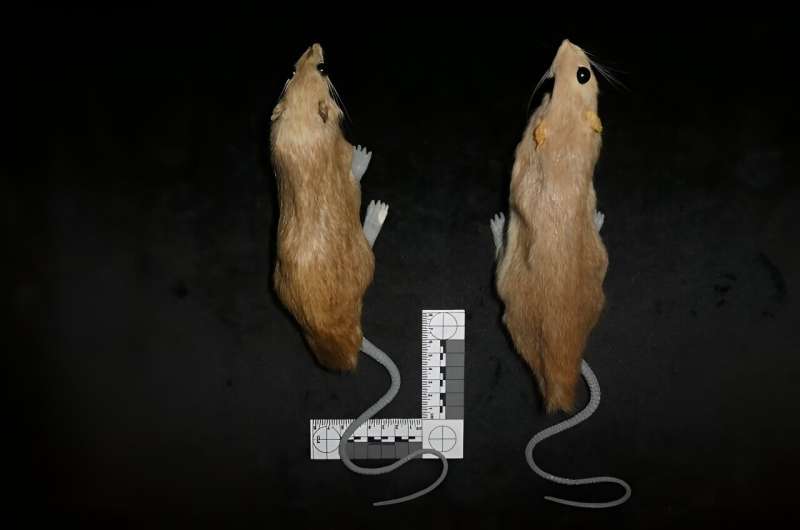This article has been reviewed according to Science X's editorial process and policies. Editors have highlighted the following attributes while ensuring the content's credibility:
fact-checked
peer-reviewed publication
trusted source
proofread
Rats study tests whether photoluminescent fur is used in nocturnal communication

In a world-first experiment, JCU researchers have been using the pelts of dead rats to test if the glow-in-the-dark fur of mammals is being used for secret nocturnal communication. The results are published in the Australian Journal of Zoology.
JCU researcher Linda Reinhold led the study. She said photoluminescence in mammal fur is common.
"Rats, along with bandicoots, possums, bats, tree-kangaroos and many other creatures in Australia and around the world are photoluminescent, they glow under ultraviolet, violet or blue light," said Miss Reinhold.
She said the fur is fluorescent, so it glows-in-the-light, but is also phosphorescent—colloquially known as glow-in-the-dark—because it can keep glowing for a while after the light is turned off.
Miss Reinhold said scientists knew some of the chemical process of how the animals achieved this, but not why.
"We aimed to test whether nocturnal vertebrates reacted differently to blueish-white photoluminescent fur than to non-photoluminescent fur."
The team purchased 36 dead rats and applied UV-protectant hairspray to half to block the photoluminescence in their fur. They then fitted the cured pelts to rat-sized models and left them in three different outdoor environments.
"We deployed pairs of real-fur rat models, one photoluminescent and the other not, and recorded the initial interactions with wildlife on full moon versus new moon nights," said Miss Reinhold.
She said the scientists had some hypotheses to test.
"We wanted to see if predators would be more attracted to either rat, or if the photoluminescence phenomenon was more likely a communication method within similar species.
"We also wanted to see if it could be a camouflage mechanism. Or if rats are sending a warning to predators by standing out, similar to the way some brightly colored poisonous animals warn of their danger if used as prey," said Miss Reinhold.
"The last two would be unlikely, as half of our mammal species have brightly photoluminescent fur, yet both kinds of mammal end up as prey," said Miss Reinhold.
She said the researchers found no significant difference in preference for non-photoluminescent over photoluminescent rat models for any habitat, moon phase or animal type.
"It was the first study on vertebrates testing photoluminescence of real mammal fur in natural lighting conditions in the field. We found no evidence for a visual function for blueish-white photoluminescence in the fur of nocturnal mammals.
"It could be that there is no particular survival advantage or disadvantage for rats and other small land-dwelling mammals of being photoluminescent, at least as an optical signaling function. So the mystery continues."
More information: Linda M. Reinhold et al, Does the photoluminescence of rat fur influence interactions in the field?, Australian Journal of Zoology (2024). DOI: 10.1071/ZO23021
Journal information: Australian Journal of Zoology
Provided by James Cook University




















